St Georges Castle
 The Castle of Agios Georgios (Saint George) is situated 5 km away from Argostoli, above the village Peratata on a hill about 300 m high. It is probably built in the 12th century AD by the Byzantine emperors.
The Castle of Agios Georgios (Saint George) is situated 5 km away from Argostoli, above the village Peratata on a hill about 300 m high. It is probably built in the 12th century AD by the Byzantine emperors.



 It is a remarkable Venetian castle with later interventions mainly from Enetians in the 16th century AD which dominates the southern part of Kefalonia and the bay of Argostoli. The castle was the capital of Kefalonia until 1757. In recent years the castle had several maintenance works in order to regain part of its old glory.
It is a remarkable Venetian castle with later interventions mainly from Enetians in the 16th century AD which dominates the southern part of Kefalonia and the bay of Argostoli. The castle was the capital of Kefalonia until 1757. In recent years the castle had several maintenance works in order to regain part of its old glory.
The outside walls which are preserved until today were built in 1504 by the Enetians. Churches and other buildings are still standing. In the main yard (Βorgo), east of the entrance, the Cathedral of Evangelistria (Annunciation), a typical example Ionian Baroque is still presenting the old glory.
Inside significant post-Byzantine icons from the ruined temples of the Castle are retained. There are still remnants of a bridge build during the period of the French occupation of the island.
In the courtyard of the fortress near a small square, you will see the ruins of the Catholic Church of Agios Nikolaos (Saint Nicholas).The castle was damaged by earthquakes in 1636 and 1637. The last earthquake of 1953 caused considerable damage. Historically we also are aware of the existence of a tunnel, connecting the castle with Argostoli, but this has not been revealed or investigated so far.
http://www.kefalonia-tours.gr/en/whattosee/kefalonia_siteseeing/saint_george_castle.php
Church Evangelistria in the Castle
The Church Evangelistria and spire located in the Castle of Agios Georgios (St. George). The marble inscription found in this testifies that the church was built in 1580. This Ionian Islands baroque church where the medieval past was the metropolis of the capital.
Wonderful remarkable Byzantine icons decorate the church and a wooden temple. From Sunday after Easter and up until the Sunday of the good Samaritan woman, the miraculous image of Virgin Mary from the Monastery of Sissi is hosted here.
Castle of Assos


One of the two (2) castles which should not be missed out during your visit in Kefalonia is the Castle of Assos.This castle is a genuine example of the Venetian fortification art. The Venetians wanted to establish a strong castle and state with a permanent population.
It is built on the peninsula of Assos, a highly strategic position. Nowadays you can enjoy the view and admire what is left of its former glory.
One of the monuments on this castle is the residence of the Venetian ruler (1593), the barracks and the church of Saint Marco. The big vault entrance of the castle still stands impressive and is preserved in good condition.
Cyclopean Walls of ancient Kranis

The Cyclopean Walls, outside the village of Razata, are ruins of the walls of the ancient city of Kranis (7th and 6th centuries BC). They had a length of about 4km (now about 2km).Krani was one of the cities of Kefalonia that were part of a kingdom called Ancient Sami that dominated Kelafonia for over three thousand years. They walls were namend Cyclopean because of their size. They are considered very important for the information we can learn from them about the Greek art of fortification during the Mycenaean era.
In the region, ruins of various buildings and a Doric temple dedicated to the goddess Dimitra and her daughter Persephone were found.
The Archaeological Museum of Argostoli has a carved inscription "Triopis Damatri kai Kora" (in other words, Triopida dedicates this to Dimitra and her daughter, Persephone). The name of the woman who made this dedication shows the ancient ties between the island and Messinia, because the father of the mythological heroine, Messinia, was called Triopas.
Drogorati Caves

 Definitely go here, it's so beautiful. Mother nature at her best!
Definitely go here, it's so beautiful. Mother nature at her best!
Melissani lake




 Located near to Karavomilos,Melissani Lake is the most spectacular cave lake on the island. The road signs are ambiguous and the lake is nearer to Karavomilos than you would first think. Within a few hundred yards off the Sami to Agia Efimia main road. The entrance is not clearly marked. (It confused us at first anyway) You will find it located inside the shop in the car park. You know when you have got there as buses usually block the road off!! There is a sizable parking lot so parking is not a problem.
Located near to Karavomilos,Melissani Lake is the most spectacular cave lake on the island. The road signs are ambiguous and the lake is nearer to Karavomilos than you would first think. Within a few hundred yards off the Sami to Agia Efimia main road. The entrance is not clearly marked. (It confused us at first anyway) You will find it located inside the shop in the car park. You know when you have got there as buses usually block the road off!! There is a sizable parking lot so parking is not a problem.
It may be 100 + degrees F outside but in the cave it is always cool and damp. There are boats waiting to show you round the lake. The guides' descriptions of the 20,000 year old stalactites are graphic and imaginative to say the least!
Lighthouse of Agioi Theodoroi






Today it is necessary to restore the bridge, which has suffered damage and has not been restored because it is frequented by pedestrians and before 2005, even from vehicles.
The museum is housed on the ground floor of the Korgialenios Library, a donation of Vangelis Typaldos Bassia. The new wing houses two exhibitions in total. The museum collects studies, ranks and keeps inventory of all the history and folklore data of Kefalonia; from the Venetian period and up until the 1953 with the earthquakes.
The permanent exhibition is divided into the sections urban and rural department, ecclesiastical art and the city plan. Τhe collection of Byzantine icons of Charokopou and of Francis and Stephen Vallianou are exhibited seperate. This is a warm and friendly showroom.
The purpose of the museum is the view of history and folklore of the island from the 16th century to 1953, since many elements of Kefallonian culture was destroyed.The Museum hosts :
• Photocopied English, French and Italian historical documents
• Household ware, porcelain, silverware
• Embroidery and daily farm utensils
• Reconstruction of a bedroom
• Watercolors, lithographs, maps, surveys, church plans
• Photographic records consisting of 3000 images of Kefalonia before earthquakes, of historical figures, of architectural hardware, of religious icons and temples.
• Works of art, wooden temples, sacred vessels, coins and pictures.In the museum you can visit the informative Korgialeneios Library hosted here.
Opening hours
Monday - Saturday, 9 a.m. - 2 p.m.
Archaeological Museum of Argostoli

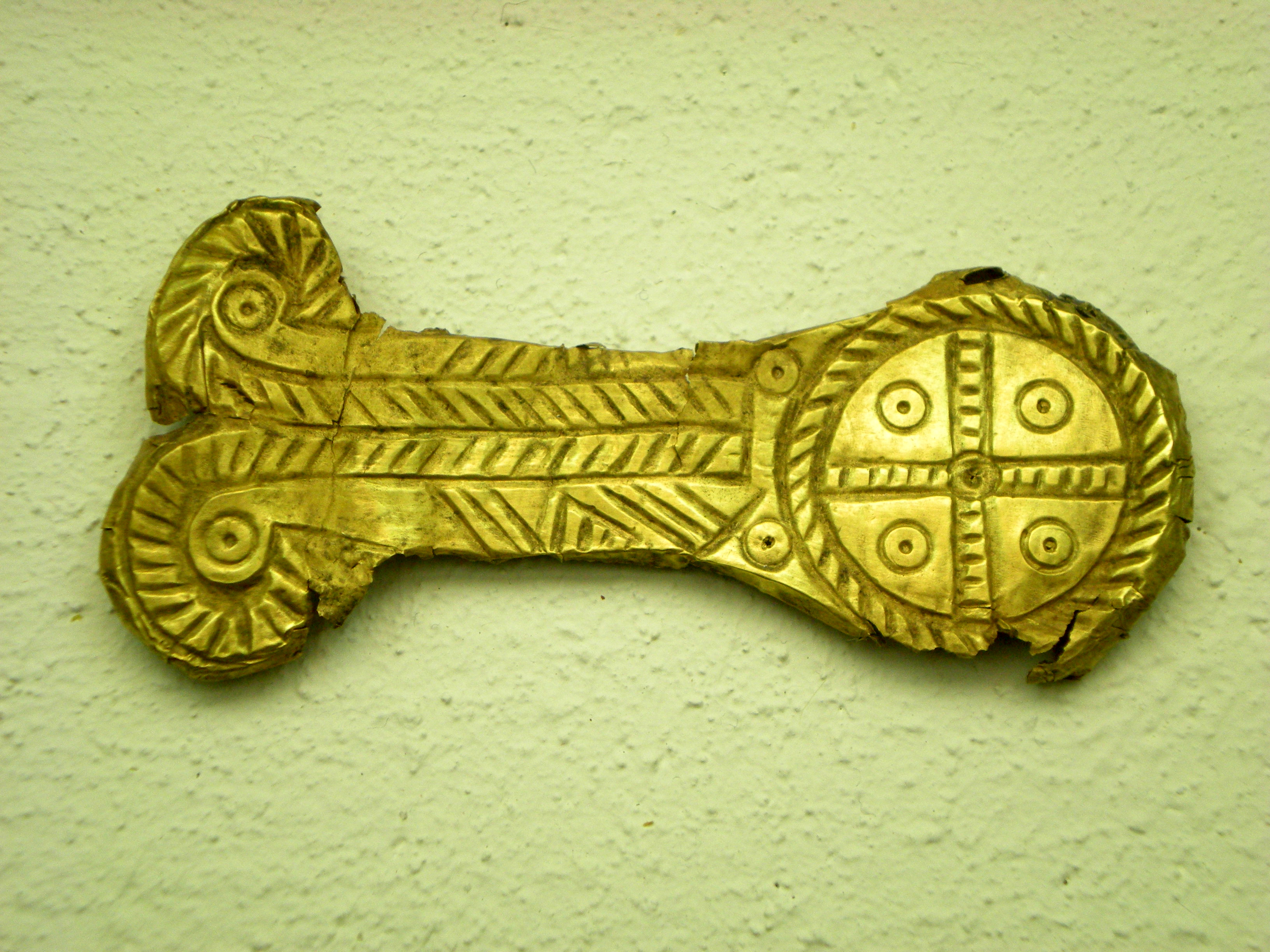
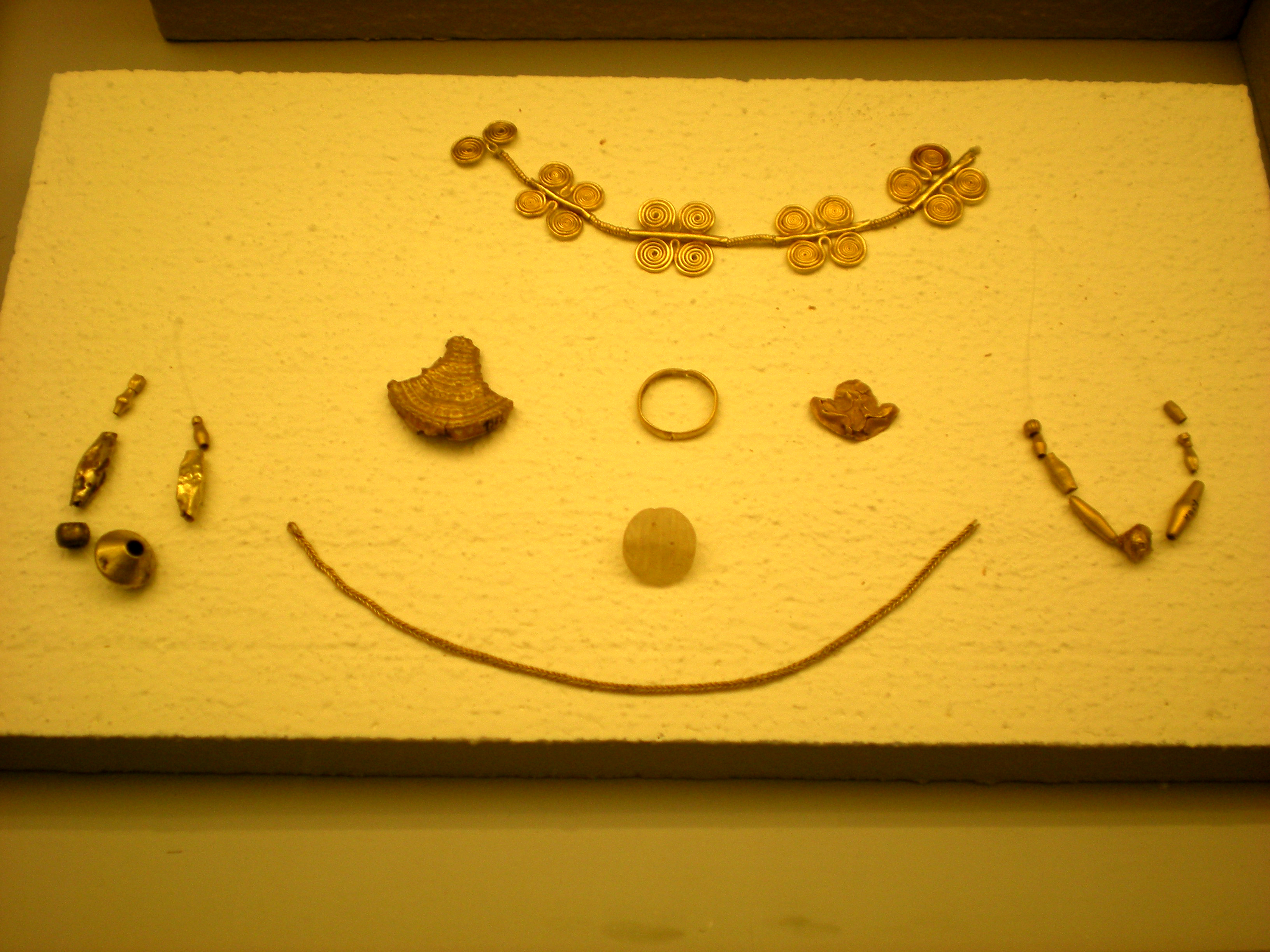 After the earthquake of 1953 which caused severe damage, theArcheological Museum of Argostoli was founded in 1957 and was completed in 1960. In the year 2000 the building was fully restored by all the damage. The Archaeological Museum of Argostoli hosted findings from the prehistoric era. The museum has three galleries.
After the earthquake of 1953 which caused severe damage, theArcheological Museum of Argostoli was founded in 1957 and was completed in 1960. In the year 2000 the building was fully restored by all the damage. The Archaeological Museum of Argostoli hosted findings from the prehistoric era. The museum has three galleries.
In the first room it exhibits findings from Sami, Fiskardo and Skala which date back to the Paleolithic and Neolithic period. Here you will find flint tools, pottery, ceramics and precious miniature vaulted tombs from the Mycenaean period.
In the second room there are findings from the Mycenaean period which present the special edge on the island of Kefalonia. Items come mainly from graves, which were very prosperous in the history of the island period.
In the third room there are findings dating back from the 5th century BC when Kefalonia was divided into 4 city-states (Pali, Krani, Pronni and Sami). In this room you will see the pitchers fronm the 8th century BC, marble head of Silenus, plastic vase in form of a slave, objects from cemeteries in Fiskardo, burial three columns, a marble female head and part of the mosaic floor of the sanctuary to Poseidon in Lixouri.Opening hours Tuesday - Sunday: 8.30 a.m. - 3 p.m.
Garden of Napier


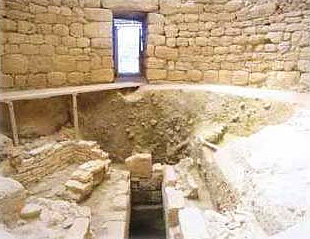 Tzanata, interior of the mycenean vaulted tomb (1350-1100 BC)
Tzanata, interior of the mycenean vaulted tomb (1350-1100 BC)







The outside walls which are preserved until today were built in 1504 by the Enetians. Churches and other buildings are still standing. In the main yard (Βorgo), east of the entrance, the Cathedral of Evangelistria (Annunciation), a typical example Ionian Baroque is still presenting the old glory.
Inside significant post-Byzantine icons from the ruined temples of the Castle are retained. There are still remnants of a bridge build during the period of the French occupation of the island.
In the courtyard of the fortress near a small square, you will see the ruins of the Catholic Church of Agios Nikolaos (Saint Nicholas).The castle was damaged by earthquakes in 1636 and 1637. The last earthquake of 1953 caused considerable damage. Historically we also are aware of the existence of a tunnel, connecting the castle with Argostoli, but this has not been revealed or investigated so far.
http://www.kefalonia-tours.gr/en/whattosee/kefalonia_siteseeing/saint_george_castle.php
Church Evangelistria in the Castle
The Church Evangelistria and spire located in the Castle of Agios Georgios (St. George). The marble inscription found in this testifies that the church was built in 1580. This Ionian Islands baroque church where the medieval past was the metropolis of the capital.
Wonderful remarkable Byzantine icons decorate the church and a wooden temple. From Sunday after Easter and up until the Sunday of the good Samaritan woman, the miraculous image of Virgin Mary from the Monastery of Sissi is hosted here.
Castle of Assos


It is built on the peninsula of Assos, a highly strategic position. Nowadays you can enjoy the view and admire what is left of its former glory.
One of the monuments on this castle is the residence of the Venetian ruler (1593), the barracks and the church of Saint Marco. The big vault entrance of the castle still stands impressive and is preserved in good condition.
Cyclopean Walls of ancient Kranis

In the region, ruins of various buildings and a Doric temple dedicated to the goddess Dimitra and her daughter Persephone were found.
The Archaeological Museum of Argostoli has a carved inscription "Triopis Damatri kai Kora" (in other words, Triopida dedicates this to Dimitra and her daughter, Persephone). The name of the woman who made this dedication shows the ancient ties between the island and Messinia, because the father of the mythological heroine, Messinia, was called Triopas.
Drogorati Caves


Melissani lake





It may be 100 + degrees F outside but in the cave it is always cool and damp. There are boats waiting to show you round the lake. The guides' descriptions of the 20,000 year old stalactites are graphic and imaginative to say the least!
Lighthouse of Agioi Theodoroi



One of the most famous attractions in the area of Argostoli is the Lighthouse of Agioi (Saints) Theodoroi.It is located just a bit off the well-known sinks and right at the entrance of the bay of Argostoli.
The Lighthouse of Saint Theodoroi was built in 1928 and joined the network of lighthouses in Greece in 1863.
It is the work of J. P. Kennedy. In the earthquake of 1953 the lighthouse was destroyed, only to be reconstructed afterwards, according to the initial plans.
http://www.kefalonia-tours.gr/en/whattosee/kefalonia_siteseeing/lantern_agios_theodore.php
De Bosset Bridge
 The Swiss Charles-Philip De Bosset is the manufacturer of this project, which was the breath for residents of Argostoli and the villages of Kefalonia, the bridge De Bosset. The construction in 1813 of delighted residents of the island was for them a great advantage as regards their travel and avoid the ferrets a malaria outbreak and death.
The Swiss Charles-Philip De Bosset is the manufacturer of this project, which was the breath for residents of Argostoli and the villages of Kefalonia, the bridge De Bosset. The construction in 1813 of delighted residents of the island was for them a great advantage as regards their travel and avoid the ferrets a malaria outbreak and death.
Initially it was a wooden structure which after the leveling of the Metela hill was constructed out of stone. In the middle of the bridge you will find a monument dedicated to manufacturers, who have given this island such a large infrastructure project. Also, the road leading to the bridge is named after Charles-Philip De Bosset in honor of the man who gave new meaning to daily life.
Korgialenio History & Folklore Museum of Argostoli
The Lighthouse of Saint Theodoroi was built in 1928 and joined the network of lighthouses in Greece in 1863.
It is the work of J. P. Kennedy. In the earthquake of 1953 the lighthouse was destroyed, only to be reconstructed afterwards, according to the initial plans.
http://www.kefalonia-tours.gr/en/whattosee/kefalonia_siteseeing/lantern_agios_theodore.php
De Bosset Bridge

Initially it was a wooden structure which after the leveling of the Metela hill was constructed out of stone. In the middle of the bridge you will find a monument dedicated to manufacturers, who have given this island such a large infrastructure project. Also, the road leading to the bridge is named after Charles-Philip De Bosset in honor of the man who gave new meaning to daily life.
Korgialenio History & Folklore Museum of Argostoli



Today it is necessary to restore the bridge, which has suffered damage and has not been restored because it is frequented by pedestrians and before 2005, even from vehicles.
The museum is housed on the ground floor of the Korgialenios Library, a donation of Vangelis Typaldos Bassia. The new wing houses two exhibitions in total. The museum collects studies, ranks and keeps inventory of all the history and folklore data of Kefalonia; from the Venetian period and up until the 1953 with the earthquakes.
The permanent exhibition is divided into the sections urban and rural department, ecclesiastical art and the city plan. Τhe collection of Byzantine icons of Charokopou and of Francis and Stephen Vallianou are exhibited seperate. This is a warm and friendly showroom.
The purpose of the museum is the view of history and folklore of the island from the 16th century to 1953, since many elements of Kefallonian culture was destroyed.The Museum hosts :
• Photocopied English, French and Italian historical documents
• Household ware, porcelain, silverware
• Embroidery and daily farm utensils
• Reconstruction of a bedroom
• Watercolors, lithographs, maps, surveys, church plans
• Photographic records consisting of 3000 images of Kefalonia before earthquakes, of historical figures, of architectural hardware, of religious icons and temples.
• Works of art, wooden temples, sacred vessels, coins and pictures.In the museum you can visit the informative Korgialeneios Library hosted here.
Opening hours
Monday - Saturday, 9 a.m. - 2 p.m.
Archaeological Museum of Argostoli



In the first room it exhibits findings from Sami, Fiskardo and Skala which date back to the Paleolithic and Neolithic period. Here you will find flint tools, pottery, ceramics and precious miniature vaulted tombs from the Mycenaean period.
In the second room there are findings from the Mycenaean period which present the special edge on the island of Kefalonia. Items come mainly from graves, which were very prosperous in the history of the island period.
In the third room there are findings dating back from the 5th century BC when Kefalonia was divided into 4 city-states (Pali, Krani, Pronni and Sami). In this room you will see the pitchers fronm the 8th century BC, marble head of Silenus, plastic vase in form of a slave, objects from cemeteries in Fiskardo, burial three columns, a marble female head and part of the mosaic floor of the sanctuary to Poseidon in Lixouri.Opening hours Tuesday - Sunday: 8.30 a.m. - 3 p.m.
Garden of Napier


An attraction that offers peace and relaxation with the beauty of the visitor is the Garden of Napier. It is an elevated wooded park with various species of plants and trees inside of Argostoli.
The park got its name in honor of the English commander who offered a lot in infrastructure during the 19th century on the island. Inside the park a memorial has been erected.
Many events take place in this park which was rebuilt after the earthquake and is suitable even for walks at night.
The park got its name in honor of the English commander who offered a lot in infrastructure during the 19th century on the island. Inside the park a memorial has been erected.
Many events take place in this park which was rebuilt after the earthquake and is suitable even for walks at night.

In 1992 at the Broutzi area of Tzanata another finding of the Mycenaean civilization was unearthed, by archaeologist Lazaros Column, confirming once again how the island flourished during this period. It is a well-preserved tomb which is unique of its kind in western Greece, because of its good position and size (height of 3.95 m and a diameter of 6.80 m). The surface is 250 square meters.
The tomb is built on an older tomb oriented from south to north. During the Venetian occupation, the tomb was used as accommodation, therefore the dome collapsed. According to the precious discoveries of gold, it is alleged to be a grave of the rich rulers of that time.
The findings that came to light are gold jewelry, gems, pottery and many more, all of which are housed in the Archaeological Museum of Argostoli.
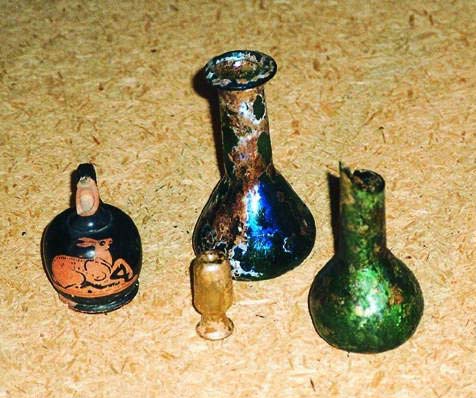
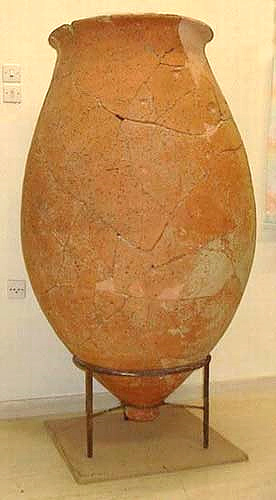 Tzanata, vessels from the mycenaen vaulted tomb (1350-1100 BC
Tzanata, vessels from the mycenaen vaulted tomb (1350-1100 BC
The tomb is built on an older tomb oriented from south to north. During the Venetian occupation, the tomb was used as accommodation, therefore the dome collapsed. According to the precious discoveries of gold, it is alleged to be a grave of the rich rulers of that time.
The findings that came to light are gold jewelry, gems, pottery and many more, all of which are housed in the Archaeological Museum of Argostoli.



Hercules inAgia Eirini

Romaic mosaic in Scala 2 and 3 A.C.


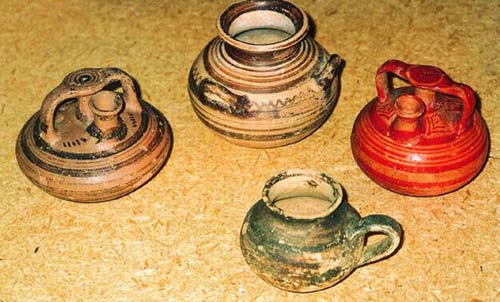
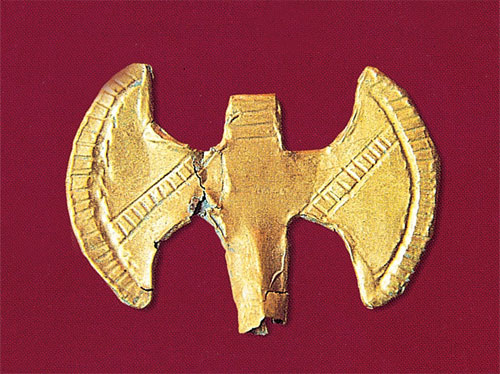

Δεν υπάρχουν σχόλια:
Δημοσίευση σχολίου